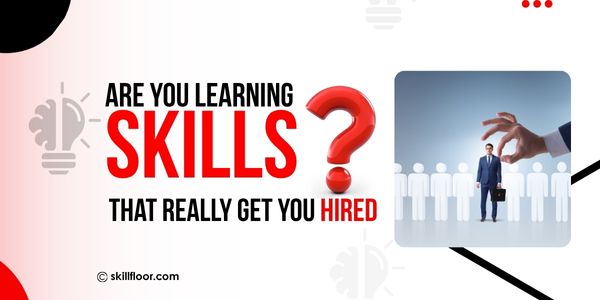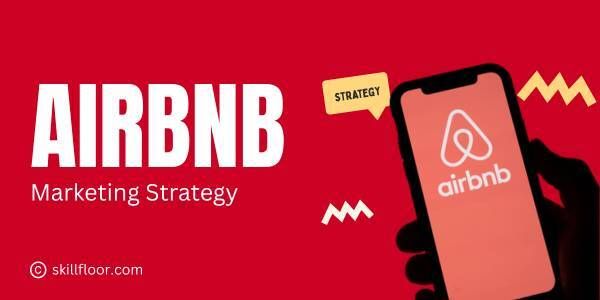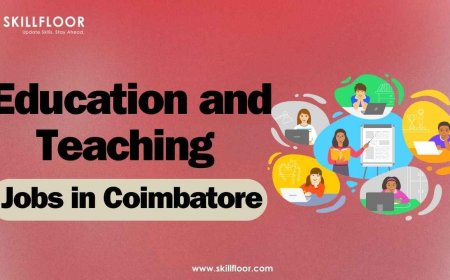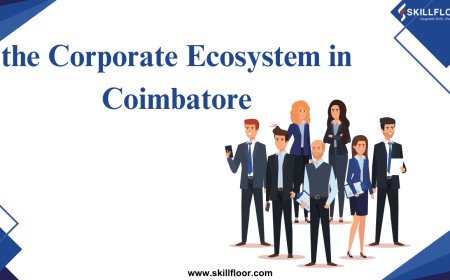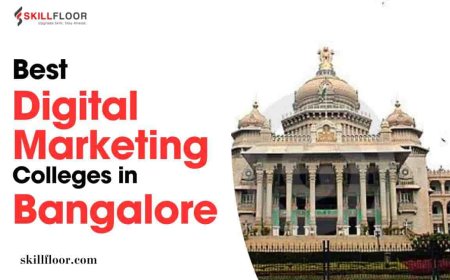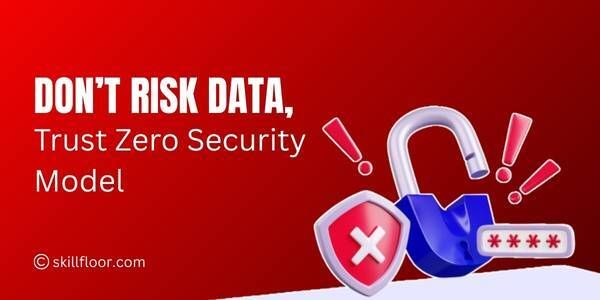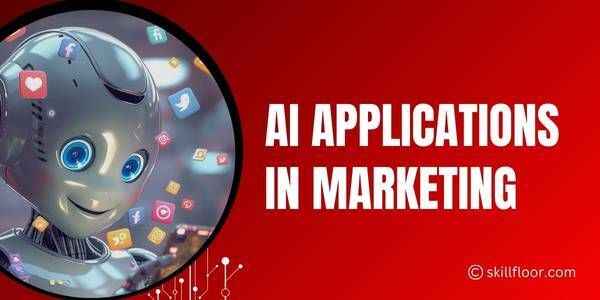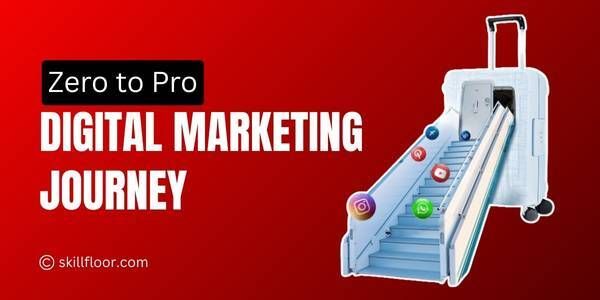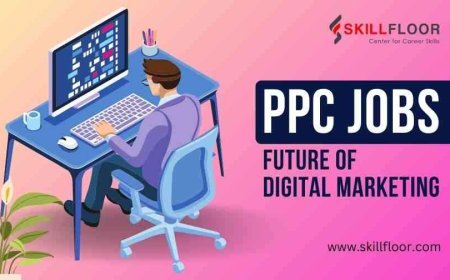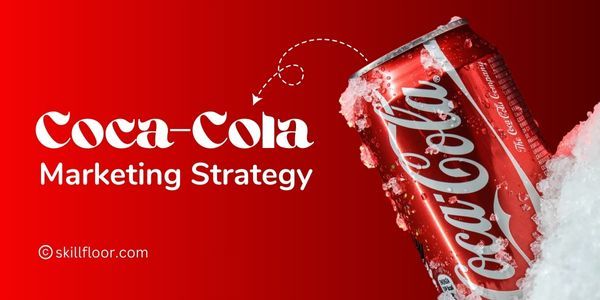Starbucks Marketing Strategy: The Case Study
Discover how Starbucks uses smart branding, customer experience, and digital marketing to stay ahead in the coffee industry.

Have you ever thought about how Starbucks turned just a simple cup of coffee into a famous brand known all over the world? As a digital marketing expert, I find their marketing strategy really interesting because it’s not just about selling products. Starbucks has learned how to connect with customers in a personal way, making every visit feel special and every cup of coffee part of something bigger. They don’t just sell coffee—they offer an experience that people enjoy being part of.
One big reason Starbucks is successful is because they understand their customers very well. They use information from their mobile app and rewards program to find out what customers like, then give them special deals and suggestions based on that. This makes customers feel important and encourages them to come back again and again. Also, Starbucks uses social media smartly sharing stories about their coffee, introducing new products, and talking with their followers right away. Their marketing shows us how using technology along with a friendly, human approach can build a strong brand that people trust and love.
Background of Starbucks
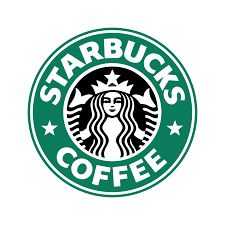
Starbucks began as a single store in Seattle’s Pike Place Market in 1971, selling high-quality coffee beans, tea, and spices. It wasn’t until Howard Schultz joined in the 1980s, inspired by Italian espresso bars, that Starbucks evolved into the coffeehouse chain we know today. Schultz’s vision was to create a “third place” between home and work a welcoming space for community and connection. As of 2024, Starbucks operates 38,137 stores in 80 countries, employs over 400,000 “partners” (employees), and reported $36.176 billion in revenue for fiscal year 2024, a 0.56% increase from 2023. Its mission, “to inspire and nurture the human spirit – one person, one cup, and one neighborhood at a time,” guides its marketing, emphasizing community, quality, and customer experience.
Key Milestones:
-
1971: Starbucks opens in Seattle, focusing on coffee beans and equipment.
-
1987: Howard Schultz acquires Starbucks, shifting to coffeehouses.
-
1996: The first international store opens in Japan, marking global expansion.
-
2000s: Starbucks Rewards and mobile app launch, enhancing customer engagement.
-
2024: Starbucks operates 16,482 U.S. stores and 21,655 international stores, with China as its second-largest market at 6,000 stores.
Marketing Mix of Starbucks
Starbucks is one of the most successful coffeehouse chains in the world. A major reason for its success is its strong marketing mix strategy, which focuses on creating a unique customer experience while maintaining premium quality and brand value.
1. Product – What Starbucks Sells
Starbucks offers much more than just coffee. Its product mix includes beverages, food items, merchandise, and even packaged coffee for home use. The brand constantly innovates with seasonal drinks, local flavors, and personalization options to keep customers excited.
Key product categories:
-
Beverages:
-
Hot and cold coffees (lattes, cappuccinos, americanos, espressos)
-
Frappuccinos (blended drinks)
-
Teavana teas and matcha-based drinks
-
Refreshers, lemonades, and smoothies
-
Food Items:
-
Sandwiches, wraps, croissants, and muffins
-
Cookies, cakes, and other baked treats
-
Healthy and vegetarian meal options
-
Retail Products:
-
Packaged coffee beans and instant coffee
-
Coffee brewing equipment and accessories
-
Branded mugs, tumblers, and reusable cups
-
Seasonal & Limited Edition Items:
-
Pumpkin Spice Latte (fall)
-
Holiday-themed drinks and merchandise
Product Strategy Highlights:
-
High quality, ethically sourced ingredients
-
Wide variety of customizable drink options
-
Innovative flavors based on local tastes and seasons
-
Consistent quality and presentation worldwide
Example: In India, Starbucks offers Masala Chai Tea and Chicken Kathi Rolls to suit local preferences.
2. Price – Starbucks’ Premium Pricing Strategy
Starbucks Marketing Strategy follows a premium pricing model, meaning it charges higher prices compared to local coffee shops or quick-service brands. But the brand justifies its pricing through high-quality products, a comfortable experience, and excellent customer service.
Why Starbucks uses premium pricing:
-
It positions Starbucks as a luxury coffee experience, not just a beverage seller.
-
Customers are willing to pay more for quality, customization, ambiance, and service.
-
Pricing supports the perception of exclusivity and high brand value.
Pricing tactics used:
-
Value-based pricing – Price reflects perceived value, not just cost
-
Psychological pricing – E.g., ₹295 instead of ₹300 feels less expensive
-
Product bundling – Combo offers (e.g., coffee + sandwich at a discounted price)
-
Loyalty rewards – Starbucks Rewards app gives free drinks or add-ons
Starbucks rarely offers heavy discounts because it doesn’t want to dilute its premium image.
3. Place – Where Starbucks Sells Its Products
Starbucks Marketing Strategy focuses heavily on strategic store placement to increase brand visibility and accessibility. It chooses high-traffic areas where its target customers—urban professionals, students, and travelers are likely to spend time.
Types of store formats:
-
Standalone cafés in city centers, business districts, and residential areas
-
Drive-thru stores on suburban and high-traffic roads
-
Kiosks in malls, airports, train stations, and university campuses
-
Online presence through mobile app ordering and delivery partners
Distribution Strategy:
-
Starbucks uses a multichannel approach—offline stores, app ordering, and third-party delivery
-
It partners with local companies in different countries (e.g., Tata Starbucks in India)
-
New store formats like pickup-only stores and express counters in urban cities
Global Reach:
-
Present in over 80 countries
-
More than 35,000 stores globally (as of 2024)
-
Local customization while maintaining global consistency
Example: In Japan, Starbucks stores often have traditional interiors to blend with local culture.
4. Promotion – How Starbucks Markets Its Brand
Starbucks Marketing Strategy doesn’t rely heavily on TV ads or flashy campaigns. Instead, it focuses on emotional branding, digital engagement, and customer experience. It promotes itself subtly, by building a lifestyle around coffee.
Promotional tools and methods:
-
Social Media Marketing:
-
Active on Instagram, Twitter, and Facebook
-
High-quality visuals and user-generated content
-
Trend-based marketing and hashtag campaigns (e.g., #RedCupSeason)
-
Starbucks Rewards Program:
-
Points-based loyalty system
-
Personalized offers, free drinks, and birthday rewards
-
In-store Promotions:
-
Seasonal product displays
-
Samples and new product tastings
-
Exclusive merchandise drops
-
Influencer Marketing:
-
Collaborations with food bloggers, lifestyle influencers, and creators
-
Content Marketing:
-
Sustainability stories, barista features, and coffee education blogs
-
YouTube videos on ethical sourcing and brewing methods
-
Community Engagement:
-
Social impact campaigns (e.g., hiring veterans, sustainability goals)
-
Promotions for using reusable cups (discounted drinks)
Emotional Connection Strategy:
-
Starbucks makes the customer feel recognized and appreciated
-
Personalized cup names, staff greetings, and cozy store ambiance
-
Campaigns that highlight inclusivity, sustainability, and social issues
Example: “What’s Your Name” campaign in the UK supported trans rights and won global praise.
Core Elements of Starbucks’ Marketing Strategy
Starbucks’ marketing combines smart branding, customer focus, technology, and social responsibility. Below, we explore each element in detail, weaving in recent data to show their effectiveness.
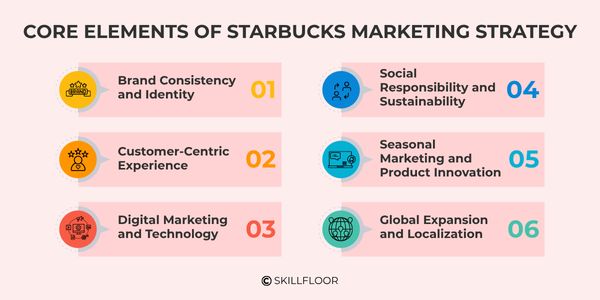
A. Brand Consistency and Identity
Starbucks has created a globally recognizable brand, from its iconic green mermaid (siren) logo to the inviting atmosphere of its stores. With a brand value of $61 billion, Starbucks ranks as the top restaurant brand globally. Its consistent experience—whether in New York or New Delhi—builds trust and loyalty. In the U.S., 10,725 stores have over 100 customer reviews, reflecting strong engagement.
How Starbucks Maintains Consistency:
-
Iconic Logo: The siren logo, simplified over time to focus on the mermaid, is universally recognized, boosting brand recall.
-
Store Design: Starbucks stores feature wooden furniture, soft lighting, and cozy seating, creating a familiar ambiance worldwide. Starbucks certified 6,091 Greener Stores using 30% less energy and water, enhancing its eco-friendly image.
-
The “Third Place” Philosophy: Starbucks positions itself as a community hub, offering free Wi-Fi (used by millions monthly) and comfortable seating to encourage lingering.
-
Global Standards: With over 20,000 international stores, Starbucks ensures consistent quality, service, and ambiance across 80 countries.
Consistency makes Starbucks reliable. Customers know they’ll get the same quality coffee and experience anywhere, driving loyalty. In 2023, beverages accounted for 60% of Starbucks’ $35.976 billion revenue, showing the strength of its core offerings. This reliability helps Starbucks maintain a 40% share of the U.S. coffee shop market, far ahead of competitors like Dunkin’.
B. Customer-Centric Experience
Starbucks sells a personalized experience, not just coffee. From writing names on cups to customizing drinks, it makes customers feel valued. The American Customer Satisfaction Index (ACSI) gave Starbucks a score of 78, up from 77, reflecting high customer satisfaction. The brand’s focus on emotional connection and premium service justifies its higher prices, with most U.S. locations classified as moderately expensive.
Key Tactics for Customer Focus:
-
Personalization: Baristas personalize orders by writing names on cups and offering customization (e.g., extra foam, almond milk). This builds a personal connection.
-
Emotional Connection: Starbucks’ advertising portrays coffee as a moment of comfort or indulgence, showing people enjoying drinks with friends or relaxing alone.
-
Customer Feedback: The “My Starbucks Idea” platform, launched in 2008, led to innovations like the Pumpkin Spice Latte and free Wi-Fi, showing Starbucks values customer input.
-
Premium Experience: Despite premium pricing (25% higher than value brands), customers return for the quality and ambiance. In 2018, 37.8 million Americans visited Starbucks within a 30-day period, with 20% visiting 16+ times monthly.
Starbucks creates a sense of belonging, turning coffee into an experience. This resonates with its core demographic—Millennials/Gen Y (53.5% prefer Starbucks) and affluent urban professionals aged 22–60. The brand’s focus on customer experience drives a 44% customer retention rate, far above the industry average of 25%.
C. Digital Marketing and Technology
Starbucks Marketing Strategy leverages digital marketing and technology to enhance convenience and engagement. Its mobile app, with 31.2 million U.S. users in 2023, is the second most popular proximity mobile payment service after Apple Pay. The Starbucks Rewards program, with 33.8 million active U.S. members in Q4 2024 (up 4% year-over-year), drives 50% of U.S. company-operated sales.
Key Digital Strategies:
-
Starbucks Rewards Program: Customers earn “stars” for purchases, redeemable for free items. In 2024, Rewards membership grew 13% year-over-year to 34.3 million, with 59% of payments via the program. Starbucks aims to double global membership to 150 million by 2029.
-
Mobile App: The app enables order-ahead, mobile payments, and personalized recommendations. By 2024, 30% of U.S. transactions were mobile orders, reducing wait times and boosting convenience.
-
Social Media Presence: Starbucks engages millions on Instagram, TikTok, and Facebook with vibrant, seasonal content and user-generated campaigns like #StarbucksDrinks. Its TikTok strategy emphasizes authenticity, featuring real baristas to humanize the brand.
-
AI and Data Analytics: Starbucks uses AI to predict demand, manage inventory, and tailor promotions. The app suggests drinks based on past orders, enhancing personalization.
Technology makes Starbucks accessible and engaging. The app streamlines purchases, Rewards incentivize loyalty, and social media keeps the brand trendy. Despite a 3% revenue decline to $9.1 billion in Q4 2024, app users visit more frequently, boosting weekly traffic. Starbucks’ digital strategy, including partnerships with Microsoft for AI-driven personalization, positions it for future growth.
D. Social Responsibility and Sustainability
Starbucks aligns with consumer values, especially among Gen Z, by prioritizing ethical sourcing and sustainability. In 2023, 99% of its coffee was ethically sourced through Coffee and Farmer Equity (C.A.F.E.) Practices, supporting over 440,000 farmers. The company aims to reduce waste by 50% by 2030 and make 100% of cups reusable or recyclable by 2025.
Key Initiatives:
-
Ethical Sourcing: C.A.F.E. Practices ensure fair wages and sustainable farming. Starbucks has distributed over 55 million rust-resistant coffee seedlings to strengthen farmer resilience.
-
Sustainability Goals: Starbucks saved 107 million single-use cups via its reusable cup program and reduced its carbon footprint per cup by 48% since 2008. Its new cold cups use 20% less plastic, saving 13.5 million pounds annually.
-
Social Impact Campaigns: The #WhatsYourName campaign promotes transgender inclusion, while Community Stores in underserved areas create jobs. Starbucks earned 100% scores on the Disability Equality Index and Human Rights Campaign Corporate Equality Index in 2024.
-
Veterans and Diversity: Starbucks is on track to hire 25,000 veterans and military spouses by 2025 and has donated over $100 million to coffee communities since 2015.
Starbucks’ ethical practices resonate with socially conscious consumers, especially Millennials and Gen Z. Its sustainability efforts, like certifying 6,091 Greener Stores by 2023, enhance its appeal. Named one of the World’s Most Ethical Companies by Ethisphere for 14 years, Starbucks builds trust and loyalty.
E. Seasonal Marketing and Product Innovation
Starbucks’ seasonal drinks, like the Pumpkin Spice Latte (PSL), are cultural phenomena. Launched in 2003, the PSL drives buzz annually, with beverages accounting for 60% of 2023’s $35.976 billion revenue. Starbucks offers over 87,000 drink combinations, catering to diverse tastes.
Key Strategies:
-
Seasonal Drinks: The PSL and drinks like Peppermint Mocha create urgency through limited-time offers, driving sales via “FOMO.”
-
Localized Products: Starbucks tailors menus to local tastes, offering matcha drinks in Japan and masala chai in India. In 2023, it launched olive oil-infused coffee, a major innovation.
-
Menu Innovation: In 2024, Starbucks introduced Iced Energy drinks, and in 2025, it began testing protein-infused foam toppings. A 30% menu reduction by FY25 aims to streamline offerings while focusing on premium items.
-
Marketing Campaigns: Seasonal campaigns use vibrant social media themes (e.g., orange for fall) to engage customers. The 2024 Cortado was heavily promoted across platforms, highlighting Starbucks’ coffee quality.
Seasonal offerings keep Starbucks relevant and exciting. Localized products appeal to diverse markets, while innovations like the Dubai Matcha respond to cultural trends. In 2024, Starbucks sold 5 million drinks daily in the U.S., with Caramel Macchiato as a top seller.
F. Global Expansion and Localization
Starbucks has grown from one Seattle store to 38,137 locations, with the U.S. leading at 16,482 stores and China at 6,000. Its ability to balance global consistency with local adaptation fuels its success. In India, Starbucks plans to reach 1,000 stores by FY28, with 479 stores across 80 cities as of 2025.
Key Strategies:
-
Strategic Partnerships: Partnerships like Tata Coffee in India help navigate local markets. Starbucks’ five-year deal with Nestlé has made it a leader in U.S. at-home coffee.
-
Localized Menus: Starbucks offers red bean pastries in China and Viennese coffee in France, aligning with local tastes.
-
Cultural Sensitivity: In tea-centric Japan, matcha beverages cater to local preferences while maintaining brand consistency.
-
Global Consistency: Core elements like the logo and store ambiance remain uniform, with 85% of beverage sales from the core menu.
Starbucks’ global-local balance appeals to diverse customers. Its 5–6% annual store growth and entry into new markets like Ecuador in 2024 show its adaptability. Despite challenges in markets like Australia (59 stores after closing 61 in 2008), Starbucks’ strategic expansions drive its global dominance.
Brian Niccol’s “Back to Starbucks” Strategy (2025)
In August 2024, Brian Niccol, former Chipotle CEO, became Starbucks’ CEO and introduced the “Back to Starbucks” strategy to address a 7% drop in global comparable sales and a 3% revenue decline to $9.1 billion in Q4 2024. The strategy refocuses on Starbucks’ roots—quality coffee and in-store experience—while tackling challenges like boycotts and declining traffic.
Key Elements of the Strategy:
-
Focus on Quality Coffee: Niccol emphasizes premium beverages like the Cortado, launched in 2024 with aggressive marketing across digital platforms. Starbucks added two coffee farms in Guatemala and Costa Rica in 2024 to improve quality.
-
Enhanced In-Store Experience: New store designs prioritize cozy, community-focused spaces. Starbucks plans to renovate stores and invest $1.5–$2 billion in labor over two years, adding one employee per store at $30/hour.
-
Barista Support: Enhanced training and benefits aim to boost morale and service quality, addressing unionization efforts in places like Buffalo, New York.
-
Digital and Physical Balance: Niccol maintains digital tools like the app (30% of U.S. transactions in 2024) while encouraging in-store visits for the “third place” experience.
Why It Matters: Niccol’s strategy responds to a 6% U.S. sales drop and a 14% decline in China in Q4 2024. By focusing on quality and experience, Starbucks aims to reverse traffic declines and compete with local chains. The company raised its quarterly dividend to $0.61 per share in 2024, signaling confidence.
Effectiveness of Starbucks’ Marketing Strategy
Starbucks’ marketing has solidified its position as a global leader, with a 40% U.S. coffee shop market share and $36.176 billion in 2024 revenue. However, challenges like boycotts and competition persist.
Success Metrics:
-
Brand Loyalty: The Rewards program’s 33.8 million U.S. members (up 4% in 2024) drive 50% of U.S. sales. Starbucks aims for 45–50 million members by 2025.
-
Global Reach: With 38,137 stores, Starbucks has twice as many locations as Dunkin’ and Tim Hortons combined.
-
Revenue: Despite a 0.5% revenue decline in the 12 months ending March 2025, Starbucks maintains 18%+ operating margins, outperforming competitors.
Challenges:
-
Over-Expansion: Markets like Australia saw closures (59 stores remain after closing 61 in 2008) due to oversaturation.
-
Competition: Local chains and Dunkin’ (11,300 stores) offer cheaper alternatives, while China’s rising local brands challenge Starbucks’ 6,000 stores.
-
Controversies: A 2023 boycott over a lawsuit against Starbucks Workers United led to a 15% net income drop to $772 million in Q2 2024.
Why It Resonates: Starbucks targets affluent, urban professionals and Millennials/Gen Y (53.5% preference), who value quality and sustainability. Its personalized, tech-driven, and ethical approach keeps it relevant, with 6,148 U.S. locations seeing above-average visitation.
Lessons for Other Brands
Starbucks’ success offers actionable insights for businesses aiming to build strong brands.
Key Takeaways:
-
Consistency Builds Trust: A unified brand identity, like Starbucks’ logo and store design, fosters reliability.
-
Personalization Drives Loyalty: Tailored experiences, like customized drinks, enhance customer retention (44% for Starbucks vs. 25% industry average).
-
Technology Enhances Engagement: Apps and loyalty programs (33.8 million U.S. members) boost convenience and sales.
-
Social Responsibility Matters: Ethical sourcing (99% of coffee) and sustainability ($100 million innovation fund) appeal to Gen Z.
-
Balance Global and Local: Starbucks’ localized menus (e.g., matcha in Japan) show how to adapt without losing brand identity.
-
Create Urgency: Seasonal campaigns like the PSL drive sales through limited-time offers.
Small businesses can personalize services or create inviting spaces, while larger brands can adopt Starbucks’ digital and sustainability strategies. Starbucks’ $100 million sustainability fund for eco-friendly stores is a model for ethical growth.
Starbucks’ marketing strategy is a great example of how a brand can grow by focusing on quality, customer experience, and emotional connection. Instead of just selling coffee, Starbucks creates a lifestyle around its products by offering a cozy environment, personalized service, and strong digital engagement. With smart pricing, product innovation, and a global yet local approach, the brand continues to attract loyal customers worldwide. Overall, Starbucks shows that building a successful brand is not just about what you sell, but how you make people feel.
